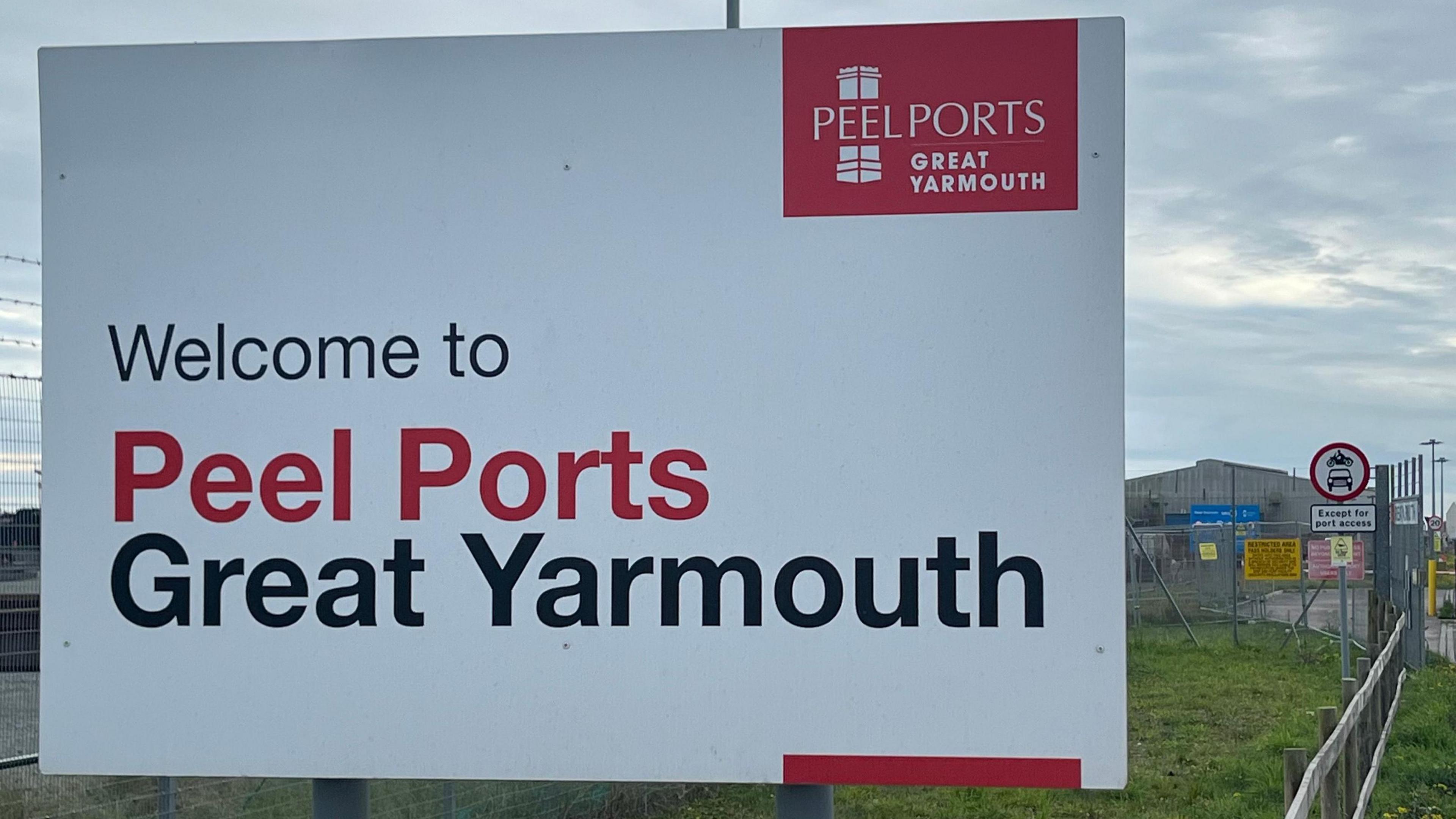Port operator warns mariners of shifting sandbanks

Peel Ports has warned mariners shoaling in Holm Channel could affect how they approach the entrance to the Outer Harbour
- Published
Mariners have been warned about shifting sandbanks near a port after its operator said there had been "significant" changes to the depth of the seabed.
Peel Ports, which manages Great Yarmouth Port in Norfolk, issued a notice to mariners advising that shoaling - the process of a watercourse becoming more shallow - in Holm Channel could affect how they approach the entrance to the Outer Harbour.
It warned government surveys have found available depths in some locations were now at 10m below Admiralty Chart Datum, external – measurements used to record tidal height.
Despite the warning, a spokesman for Peel Ports said the shoaling did not affect the size of vessels being able to enter the harbour.
While there is no immediate impact, shifting sandbanks can cause problems and, over time, may result in restricting the size of vessels able to enter Norfolk's waters.
In the future, the port may require dredging work to ensure access.
Holm Channel is a key route into the port and is used daily by large vessels.
Great Yarmouth Port is flanked by a number of ever-shifting sandbanks, including Corton Sands and Holm Sand and Scroby Sands, which has become a wind farm site.
It handles a variety of ships and cargoes and is the principal UK port for the Southern North Sea gas fields.
This article was written by a trusted journalist and then edited for length and style with the help of AI, before being checked again by a BBC Journalist. It's part of a pilot.
Get in touch
Do you have a story suggestion for Norfolk?
Follow Norfolk news on BBC Sounds, Facebook, external, Instagram, external and X, external.